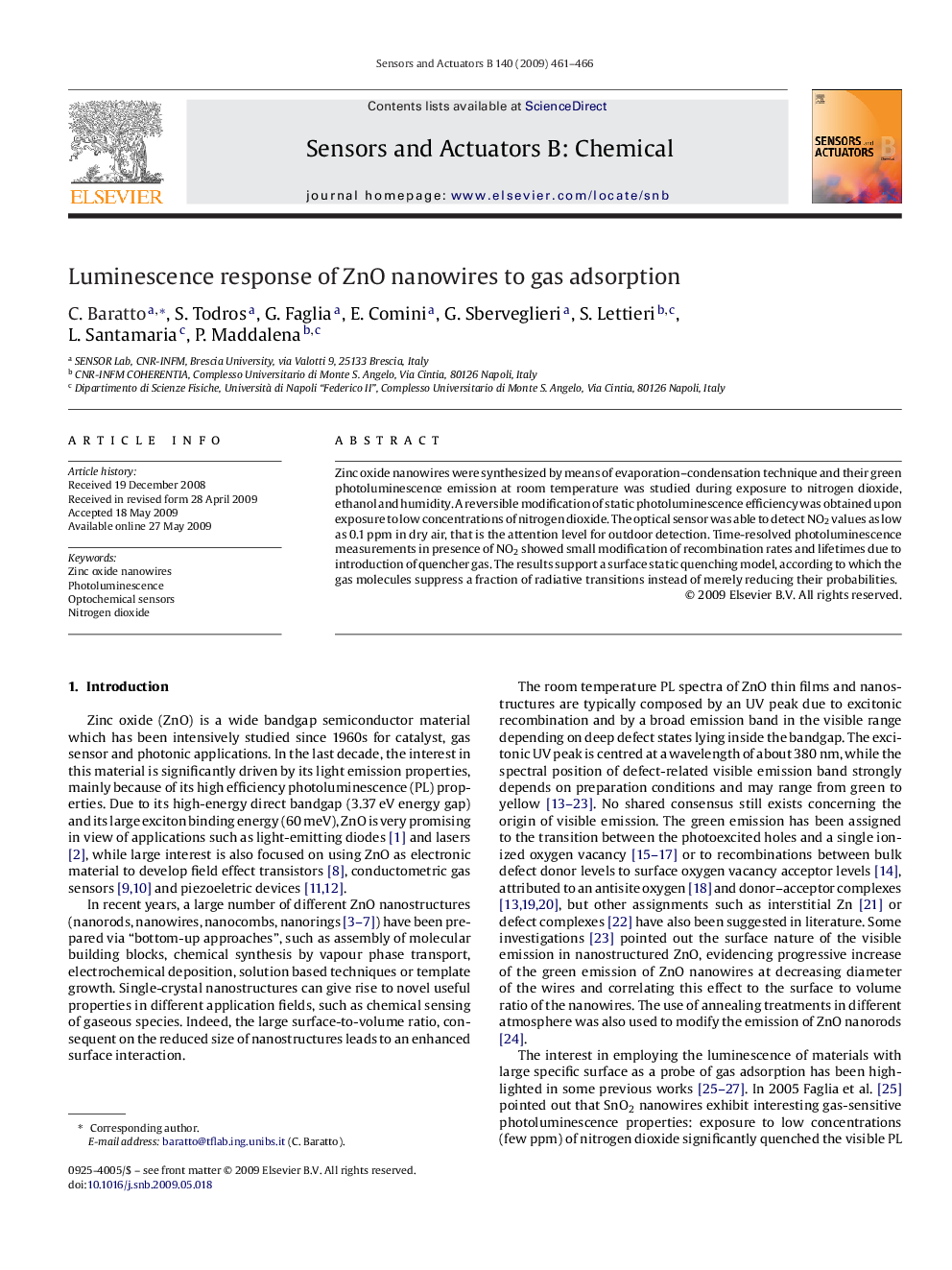| Article ID | Journal | Published Year | Pages | File Type |
|---|---|---|---|---|
| 746431 | Sensors and Actuators B: Chemical | 2009 | 6 Pages |
Zinc oxide nanowires were synthesized by means of evaporation–condensation technique and their green photoluminescence emission at room temperature was studied during exposure to nitrogen dioxide, ethanol and humidity. A reversible modification of static photoluminescence efficiency was obtained upon exposure to low concentrations of nitrogen dioxide. The optical sensor was able to detect NO2 values as low as 0.1 ppm in dry air, that is the attention level for outdoor detection. Time-resolved photoluminescence measurements in presence of NO2 showed small modification of recombination rates and lifetimes due to introduction of quencher gas. The results support a surface static quenching model, according to which the gas molecules suppress a fraction of radiative transitions instead of merely reducing their probabilities.
